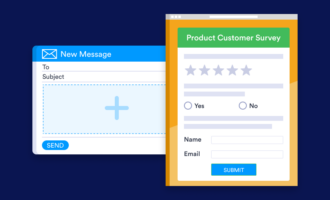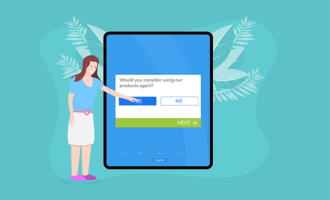Schools and campuses are delicate ecosystems that need constant maintenance to remain healthy, productive, and safe. But how do you know what needs attention? Here’s the short and easy answer: surveying students.
Student surveys are the litmus test for any learning environment, helping administrators understand what’s working and what isn’t. By collecting data and feedback, schools can serve their students more effectively, allowing teachers, students, and administrators to thrive.
Plus, surveying students can give you insight into your students’ daily experiences, helping you discover solutions to problems you otherwise might not have realized existed. The only hurdle is to know what questions to ask and how to ask them.
Here’s a step-by-step guide to help you conduct effective surveys that target a diverse population of students. With some time, patience, and the right technology, you can gain key insights into the lives of your students and maintain a campus environment where they’ll flourish.
1. Ask detailed questions
First, identify your goal and be specific. What are you looking to improve, and what do you want to focus on? The broader your questions, the less effective your answers will be.
For instance, if you’re interested in evaluating teacher performance, ask students to rate their experience with educators and confirm whether teachers are helping or hindering students when it comes to their coursework. If you want to identify potential areas of discrimination, ask students if they feel represented in their learning environment or if they’ve felt targeted because of their background. If you’re looking to improve student engagement, try asking them which teaching methods they find most effective.
Once you’ve identified your goal, it’s time to decide the most appropriate metric for students to answer each question. You could offer a simple yes or no option (although this won’t allow for much nuance in student responses), a one through 10 rating option, or a Likert scale (“strongly disagree” to “strongly agree”) option. In addition, you can place an optional comment section beneath each question so students can explain their answers more fully. Collecting both qualitative and quantitative data will allow you to analyze survey results on two different levels.
2. Use the right technology
Conducting surveys by text, computer, and tablet can help engage younger people. Using the right software is also critical to successfully surveying students, as it allows you to collect and analyze your data securely, quickly, and conveniently.
Platforms like Jotform offer a variety of survey templates. Whether you want to survey students regarding teacher assessments, stress levels, or remote learning, Jotform has over 100 education-related survey templates available — and, if Jotform’s templates don’t fit your exact needs, they’re easily customizable. Jotform Education also offers easy-to-use data collection forms specifically for educators.
3. Encourage students to complete surveys
Once you’ve identified your questions and chosen the best technology, you have to find the right space for students to answer those questions sincerely and thoughtfully. Email surveys are a cost-effective option, but the majority go unopened, and students almost always ignore phone calls from unknown numbers. It’s helpful to engage students in physical spaces instead.
Consider dedicating classroom time specifically to answering surveys. This way, students won’t have to use their free time to conduct the survey and will likely spend more time on their answers — anything to avoid schoolwork, right? This is also a great way to make sure everyone is included and data doesn’t disproportionately represent certain groups.
If classroom time is scarce, consider working with student activity groups and clubs. Try setting up booths in recreational spaces with small incentives — like free pens, notebooks, or even gift cards — to answer the survey. You can also email the survey to every student and offer an incentive for those who fill it out, such as additional credit.
4. Analyze your results
Now that you’ve gathered information from surveying students, it’s time to analyze those results. Provided you’ve collected both quantitative and qualitative data, analyze your quantitative data first and look for overall patterns. Platforms like Jotform can take spreadsheet data and turn it into easy-to-understand graphs and tables, doing the calculations so you don’t have to.
Your qualitative data can offer further context for those numbers. Compare the quantitative results to the qualitative information you’ve received and see if it tells an overall story. For instance, if you’re surveying for student bullying, the numbers may show you the degree of concern, while the comments may provide helpful student solutions. If you collect demographic data, such as ethnicity and gender, you can also compare numbers according to different backgrounds by creating multiple charts out of the one dataset. If the results are confusing or contradictory, it’s possible you’ll need a second round of surveys.
Surveys can track your school’s progress or demonstrate the impact of your solutions. Continue surveying students to ensure your educational environment is safe and effective for students and teachers alike.
This article is intended for school administrators, educators, counselors, and campus staff who are responsible for understanding and improving the student experience. It’s especially useful for those looking for practical guidance on how to survey students effectively, collect meaningful feedback, and analyze the results to enhance learning environments, student engagement, and overall campus wellbeing.






































































































Send Comment: